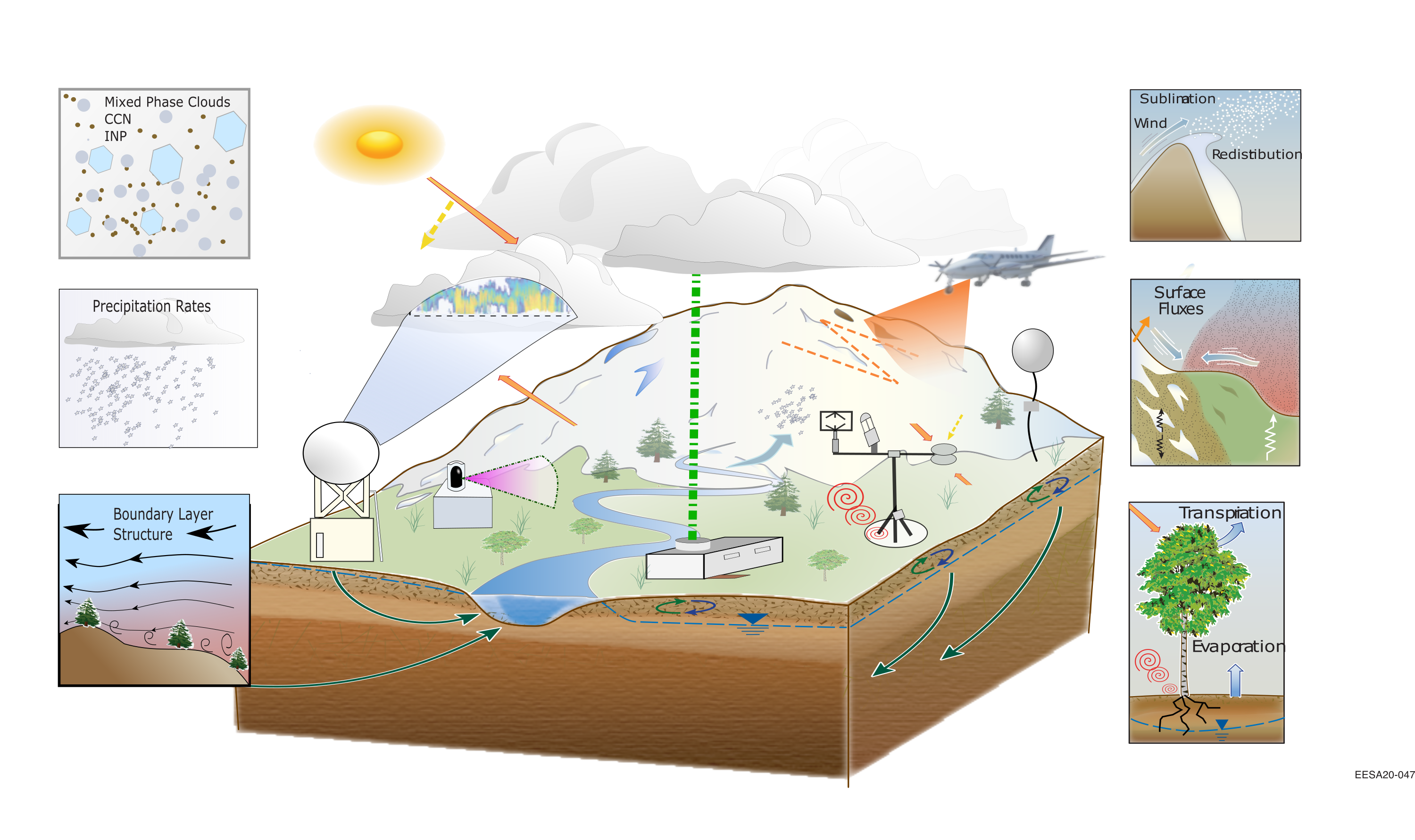A year in the Colorado Rockies -- Perspectives on science opportunities from the first half of SAIL
Authors
Daniel Feldman — Lawrence Berkeley National Laboratory *
Allison C Aiken — Los Alamos National Laboratory
William R Boos — University of California, Berkeley
Rosemary Carroll — Desert Research Institute
V. Chandrasekar — Colorado State University
Scott Matthew Collis — Argonne National Laboratory
Jessie Creamean — Colorado State University
Gijs de Boer — Brookhaven National Laboratory
Jeff Deems — National Snow Ice Data Center
Paul J. DeMott — Colorado State University
Jiwen Fan — Pacific Northwest National Laboratory
Alejandro Nicolas Flores — Boise State University
Maxwell Grover — Argonne National Laboratory
David Gochis — NSF National Center for Atmospheric Research
Anna Lily Hodshire — QuantAQ, Inc.
Robert Jackson — Argonne National Laboratory
Ezra JT Levin — Handix Scientific (United States)
Joe Robert OBrien — Argonne National Laboratory
Mark Raleigh — University of Washington
Alan Rhoades — Lawrence Berkeley National Laboratory
William Rudisill — Boise State University
Zachary Scot Sherman — Argonne National Laboratory
S. McKenzie Skiles — University of Utah
James N. Smith — University of California, Irvine
Adam Varble — Pacific Northwest National Laboratory
Kenneth Hurst Williams — Lawrence Berkeley National Laboratory
Category
ARM field campaigns – Results from recent ARM field campaigns
Description

The Surface Atmosphere Integrated Field Laboratory (SAIL) Campaign involves the deployment of an atmospheric observatory (U.S. Department of Energy’s ARM Mobile Facility) to the East River Watershed near Crested Butte, Colorado. The goal of the campaign is to establish the minimum but sufficient set of observations of atmospheric processes that is needed to understand and predict, on seasonal timescales, surface energy and water budgets in the Upper Colorado River Basin. The campaign is advancing towards that goal by collecting a wide range of datastreams and through coordination with scientific partners including the DOE’s Watershed Function Scientific Focus Area, the Rocky Mountain Biological Laboratory (RMBL), NOAA’s Study of Precipitation, the Lower Atmosphere and Surface for Hydrometeorology (SPLASH), NSF’s Sublimation of Snow (SOS), and other local, state, and federal agencies.
SAIL began on September 1, 2021 and will extend to June 15, 2023 and is measuring precipitation, clouds, winds, aerosols, radiation, temperature, humidity and trace gasses. To date, the SAIL instruments have produced information-rich datasets across a series of meteorological events. These enable scientific opportunities to explore a suite of processes that impact mountain hydrology. This presentation highlights several of these including (1) where and why end-of-winter snowpack spatial variation of end-of-winter snowpack are correlated with spatial variations in precipitation measured by a radar and (2) how the time-series of aerosol observations can be used to reveal the sources of aerosols that impact snow albedo and the dynamics of aerosol deposition onto the snowpack.
Lead PI
Daniel Feldman — Lawrence Berkeley National Laboratory

